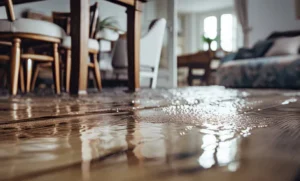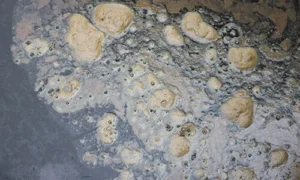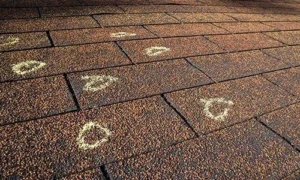Are you prepared to protect your home from winter’s chill and prevent costly water damage?
Winterizing your home is essential not only for keeping the warmth in but also for keeping water damage out. Here are some straightforward steps to help you get your home winter-ready.
- Inspect and Seal Windows and Doors One of the primary entry points for cold air and moisture is through windows and doors. Check for gaps or cracks around frames and use weatherstripping or caulk to seal them. This prevents drafts and helps keep out moisture that can cause water damage over time.
- Clean and Repair Gutters Clogged gutters can lead to water overflowing and seeping into your home’s foundation, causing significant damage. Before winter sets in, clear out leaves and debris from your gutters and downspouts. Ensure they are securely attached and properly directing water away from your home.
- Insulate Pipes Pipes, especially those in unheated areas like basements, attics, or garages, are susceptible to freezing and bursting during winter. Insulate these pipes with foam sleeves or heat tape to prevent freezing. Additionally, keep your home’s thermostat at a consistent temperature to avoid drastic drops that can lead to frozen pipes.
- Check Your Roof Your roof is your first line of defense against snow and ice. Inspect it for missing, damaged, or loose shingles that could allow water to seep in. Consider hiring a professional to evaluate your roof’s condition and make necessary repairs before the winter storms hit.
- Maintain Your Heating System A well-maintained heating system not only keeps your home warm but also helps prevent water damage. Schedule a professional inspection of your furnace, boiler, and any space heaters to ensure they are functioning efficiently. This reduces the risk of malfunctions that could lead to leaks or other water-related issues.
- Test Sump Pumps If you have a sump pump, test it to make sure it’s working properly. Pour a bucket of water into the sump pit and observe whether the pump activates and removes the water. Consider installing a backup battery in case of power outages during winter storms.
- Trim Trees and Shrubs Overhanging branches can break under the weight of snow and ice, potentially damaging your roof or other parts of your home. Trim trees and shrubs near your house to minimize this risk. This also helps prevent clogged gutters and downspouts from fallen leaves and branches.
- Inspect Attic and Basement Check your attic and basement for signs of leaks or moisture. Look for water stains, mold, or a musty odor. Insulate your attic properly to prevent ice dams on your roof, which can lead to water damage. In the basement, ensure that any cracks in the foundation are sealed and that the area is properly ventilated.
- Prepare an Emergency Kit Despite all precautions, emergencies can still happen. Prepare an emergency kit that includes items like a battery-powered sump pump, a wet/dry vacuum, towels, and a list of emergency contacts. Being prepared can help you respond quickly to any water-related issues.
By taking these simple steps to winterize your home, you can significantly reduce the risk of water damage and enjoy a safe, dry winter. Regular maintenance and preparedness are key to protecting your home from the challenges of the colder months.






